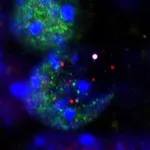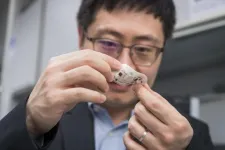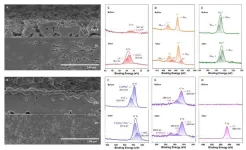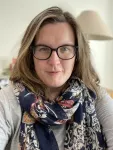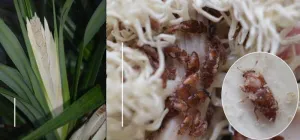“Inflammation of brain neurons is usually considered to be a bad thing, since it can lead to neurological problems such as Alzheimer’s and Parkinson’s disease,” said study leader Jelena Radulovic, M.D., Ph.D., professor in the Dominick P. Purpura Department of Neuroscience, professor of psychiatry and behavioral sciences, and the Sylvia and Robert S. Olnick Chair in Neuroscience at Einstein. “But our findings suggest that inflammation in certain neurons in the brain’s hippocampal region is essential for making long-lasting memories.”
The hippocampus has long been known as the brain’s memory center. Dr. Radulovic and her colleagues found that a stimulus sets off a cycle of DNA damage and repair within certain hippocampal neurons that leads to stable memory assemblies—clusters of brain cells that represent our past experiences. Elizabeth Wood, a Ph.D. student, and Ana Cicvaric, a postdoc in the Radulovic lab, were the study’s first authors at Einstein.
From Shocks to Stable Memories
The researchers discovered this memory-forming mechanism by giving mice brief, mild shocks sufficient to form a memory of the shock event (episodic memory). They then analyzed neurons in the hippocampal region and found that genes participating in an important inflammatory signaling pathway had been activated.
“We observed strong activation of genes involved in the Toll-Like Receptor 9 (TLR9) pathway,” said Dr. Radulovic, who is also director of the Psychiatry Research Institute at Montefiore Einstein (PRIME). “This inflammatory pathway is best known for triggering immune responses by detecting small fragments of pathogen DNA. So at first we assumed the TLR9 pathway was activated because the mice had an infection. But looking more closely, we found, to our surprise, that TLR9 was activated only in clusters of hippocampal cells that showed DNA damage.”
Brain activity routinely induces small breaks in DNA that are repaired within minutes. But in this population of hippocampal neurons, the DNA damage appeared to be more substantial and sustained.
Triggering Inflammation to Make Memories
Further analysis showed that DNA fragments, along with other molecules resulting from the DNA damage, were released from the nucleus, after which the neurons' TLR9 inflammatory pathway was activated; this pathway in turn stimulated DNA repair complexes to form at an unusual location: the centrosomes. These organelles are present in the cytoplasm of most animal cells and are essential for coordinating cell division. But in neurons—which don’t divide—the stimulated centrosomes participated in cycles of DNA repair that appeared to organize individual neurons into memory assemblies.
“Cell division and the immune response have been highly conserved in animal life over millions of years, enabling life to continue while providing protection from foreign pathogens,” Dr. Radulovic said. “It seems likely that over the course of evolution, hippocampal neurons have adopted this immune-based memory mechanism by combining the immune response’s DNA-sensing TLR9 pathway with a DNA repair centrosome function to form memories without progressing to cell division.”
Resisting Inputs of Extraneous Information
During the week required to complete the inflammatory process, the mouse memory-encoding neurons were found to have changed in various ways, including becoming more resistant to new or similar environmental stimuli. “This is noteworthy,” said Dr. Radulovic, “because we’re constantly flooded by information, and the neurons that encode memories need to preserve the information they’ve already acquired and not be ‘distracted’ by new inputs.”
Importantly, the researchers found that blocking the TLR9 inflammatory pathway in hippocampal neurons not only prevented mice from forming long-term memories but also caused profound genomic instability, i.e, a high frequency of DNA damage in these neurons.
“Genomic instability is considered a hallmark of accelerated aging as well as cancer and psychiatric and neurodegenerative disorders such as Alzheimer’s,” Dr. Radulovic said. “Drugs that inhibit the TLR9 pathway have been proposed for relieving the symptoms of long COVID. But caution needs to be shown because fully inhibiting the TLR9 pathway may pose significant health risks.”
The study is titled “Formation of memory assemblies through the DNA sensing TLR9 pathway.” Other Einstein authors are: Hui Zhang, Ph.D., Zorica Petrovic, B.A., Anna Carboncino, Ph.D., Kendra K. Parker, B.A., Thomas E. Bassett, Ph.D., Xusheng Zhang, M.S. The other contributors are: co-first author Vladimir Jovasevic, Ph.D., at Northwestern University, Chicago, IL; Maria Moltesen, Ph.D., Naoki Yamawaki, Ph.D., Hande Login, Ph.D., Joanna Kalucka, Ph.D., all at Aarhus University, Aarhus, Denmark; Farahnaz Sananbenesi, and Andre Fischer, Ph.D., at University Medical Center, Göttingen, Germany.
***
About Albert Einstein College of Medicine
Albert Einstein College of Medicine is one of the nation’s premier centers for research, medical education and clinical investigation. During the 2023-24 academic year, Einstein is home to 737 M.D. students, 209 Ph.D. students, 124 students in the combined M.D./Ph.D. program, and approximately 239 postdoctoral research fellows. The College of Medicine has more than 2,000 full-time faculty members located on the main campus and at its clinical affiliates. In 2023, Einstein received more than $192 million in awards from the National Institutes of Health. This includes the funding of major research centers at Einstein in cancer, aging, intellectual development disorders, diabetes, clinical and translational research, liver disease, and AIDS. Other areas where the College of Medicine is concentrating its efforts include developmental brain research, neuroscience, cardiac disease, and initiatives to reduce and eliminate ethnic and racial health disparities. Its partnership with Montefiore, the University Hospital and academic medical center for Einstein, advances clinical and translational research to accelerate the pace at which new discoveries become the treatments and therapies that benefit patients. For more information, please visit einsteinmed.edu, follow us on Twitter, Facebook, Instagram, LinkedIn, and view us on YouTube.
END

